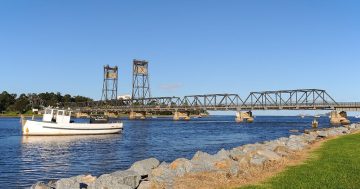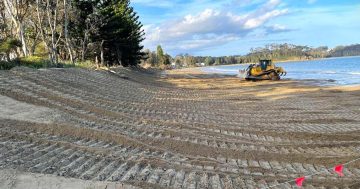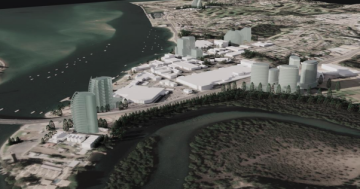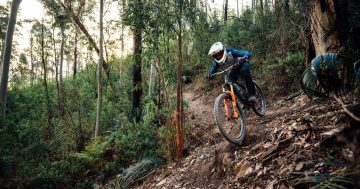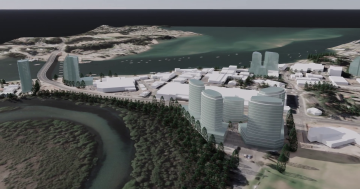
The new Batemans Bay Bridge. Photo: RMS.
“Batemans Bay Bridge is using some of the widest precast segments of their kind in Australia,” says Member for Bega, Andrew Constance, and they are being made locally.
The vast concrete bridge segments that will form the backbone of the new Batemans Bay Bridge are being made at a purpose-built facility south of Mogo.
“[The Batemans Bay Bridge segments are] 20.1m wide, compared to those used on the new Grafton Bridge under construction (16.5m) and the Hunter Expressway near Newcastle (15.5m),” Mr Constance says.
“Match casting is a method of precasting where concrete segments are formed off the adjacent segment to produce a precise structure.
“Work on the new purpose-built facility has included installing environmental controls, levelling the site, building a production shed on a concrete slab, temporary offices, setting up and using specialty equipment, and establishing parking and amenities.

The precast facility near Mogo during construction. Photo: Supplied.
“The location for the new facility has helped reduce the heavy vehicle trips in the Batemans Bay Town Centre, minimised environmental impacts by using a former quarry site rather than creating an entirely new site, and kept employment and training opportunities within the local area,” Mr Constance says.
“This is fantastic for our region, to have these specially made segments made right here in the Eurobodalla with locals being employed and gaining the knowledge and skills to further their job opportunities.
“We will see more trucks and light vehicles travelling into and out of the Mogo site from the Princes Highway during the project and I thank local residents for their patience whilst this amazing project forges ahead.”
https://www.youtube.com/watch?v=hZhXHi_533Q
The news comes just a week after a massive barge arrived on the Clyde River from Yamba on the north coast.
The 3,000 tonne, 21 metre wide and 55 metre long barge will be in the Bay for the duration of the project and will house a crane and other materials to build the new bridge piers.
The $274 million project is geared at improving freight access, reducing traffic delays in peak travel times and improving access to the Clyde River. It is due for completion in early 2023.







